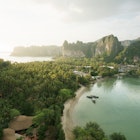
Jan 24, 2025 • 19 min read
Don your flower lei and kick back on the beach with this guide to using points and miles to travel to Hawaii.

Jan 24, 2025 • 19 min read
Don your flower lei and kick back on the beach with this guide to using points and miles to travel to Hawaii.

Jan 24, 2025 • 13 min read
On a recent trip to New Orleans, we focused on the city's incredible food. Here's where to belly up for five days of eating in The Big Easy.

Jan 24, 2025 • 5 min read
Italy is one of the most visited countries in Europe and its many attractions are hard to resist. Find out if you need a visa before you go.

Jan 24, 2025 • 9 min read
New England’s beaches and islands offer activities ranging from swimming to fishing, camping, hiking and wildlife viewing, both at the coast and lakeside.

Jan 24, 2025 • 11 min read
The Pacific Ocean is Maui’s playground, and it's easily accessed from stunning beaches dotted all along the coast. Here's a guide to Maui's best beaches.

Jan 24, 2025 • 8 min read
Everything you've ever wanted to know about the logistics of planning an Alaskan adventure, plus tips for keeping it cheap.

Jan 24, 2025 • 8 min read
Mexico’s best experiences are worth writing home about. Here's how to keep your cell connected.

Jan 24, 2025 • 15 min read
New England has no shortage of things to do from hiking and wildlife watching to soaking up history and culture. Here's our pick of the best of the region.

Jan 24, 2025 • 11 min read
New England offers a wide range of hikes, from quick strolls to all-day mountain climbing challenges.

Jan 24, 2025 • 12 min read
Discover the 16 best things to do in İzmir, the pearl of Türkiye’s Aegean Coast.

Jan 24, 2025 • 8 min read
The beaches in the Bahamas are as varied as you'd expect for more than 700 islands, and discovering the best one for you is half the fun.

Jan 24, 2025 • 8 min read
Introduce your kids to new experiences with a weekend in Mexico City.

Jan 24, 2025 • 11 min read
The croissant, like its close cousin, the pain au chocolat, is the quintessential Parisian breakfast. Here's where to find the best croissants in Paris.

Jan 23, 2025 • 8 min read
Wave goodbye to glam Stockholm and wake up in the wintery wilderness of the Arctic when you take the night train north.

Jan 23, 2025 • 9 min read
Thailand teems with stupendous beaches. From famous spots like Maya Bay to hidden gems like Bottle Beach, these are 10 of the best ones.

Jan 23, 2025 • 12 min read
The best tapas and pintxos spots in Spain will sweep you (and your tastebuds) off your feet.

Jan 23, 2025 • 7 min read
Explore Toronto's neighborhoods one district at a time with this guide.

Jan 23, 2025 • 14 min read
Discover the best things to do in Rhode Island with this definitive tour of the towns, foods, sights and activities that the Ocean State is known for.

Jan 23, 2025 • 9 min read
Explore the best of Toronto as a family with these kid-friendly things to do.

Jan 23, 2025 • 6 min read
Greece is home to some of the world’s most famous ancient ruins. Here’s where to find them.

Jan 23, 2025 • 5 min read
Cameras at the ready! Our list of the most beautiful castles in England will have you snapping away like a Royal corgi.

Jan 22, 2025 • 6 min read
While there’s plenty to splurge on in sophisticated Mexico City, the capital’s relative affordability stands out. Here’s how to enjoy the city for less.